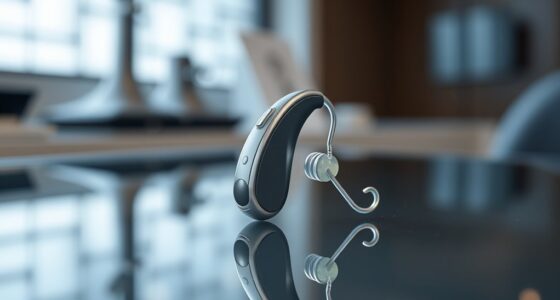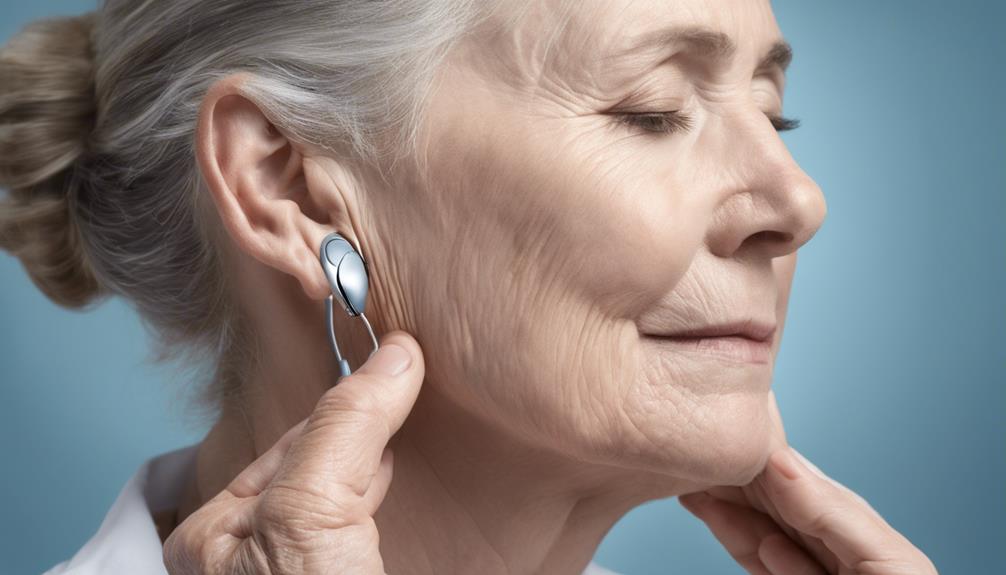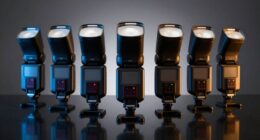In the world of glasses and hearing aids, finding the right balance of comfort is like composing a complex piece of music. The interaction between these essential tools can result in a seamless harmony or a discordant clash.
As we explore the nuances of maximizing comfort in this unique pairing, we uncover practical tips and innovative solutions that elevate the wearing experience for individuals seeking both clarity of sight and sound.
Key Takeaways
- Choose glasses with thin temples and adjustable nose pads for a proper fit.
- Opt for lightweight frames and adjustable temple tips for comfort.
- Utilize cushioned ear grips or temple tips to manage pressure points.
- Ensure compatibility and consult experts for personalized advice on fit and comfort.
Choosing the Right Frame Styles
When selecting glasses frames to complement your hearing aids, opt for styles with thinner temples for enhanced comfort and functionality. Thinner temples provide the necessary space for the behind-the-ear (BTE) part of the hearing aids, ensuring a proper fit without unnecessary pressure.
Look for frames with adjustable temple tips, allowing for a customized fit that accommodates the hearing aids seamlessly. Lightweight frames made from flexible materials are ideal as they reduce overall weight and provide additional comfort when wearing both devices.
Consulting with opticians is crucial in finding frame styles that not only suit your personal preferences but also work well with your specific type of hearing aids. By choosing the right frame styles, you can ensure that your glasses and hearing aids work together harmoniously, allowing you to go about your day with ease and comfort.
Ensuring Proper Fit for Both Devices
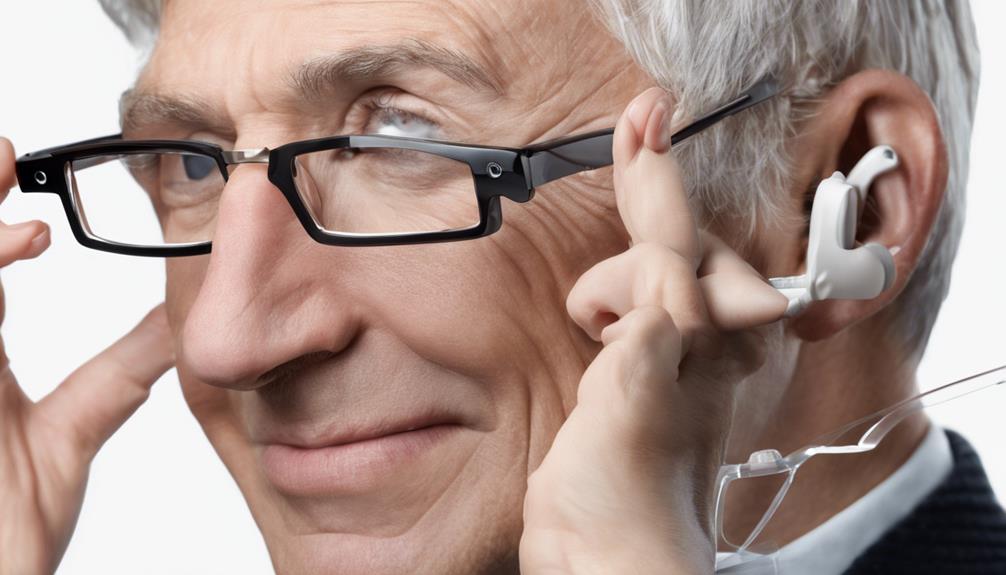
How can we ensure a comfortable and proper fit for both glasses and hearing aids when worn together? To achieve the best fit and maximum comfort, consider the following tips:
- Choose glasses with thin temples: Opt for glasses frames with thin temples to allow ample space for behind-the-ear (BTE) hearing aids without causing pressure points or discomfort.
- Opt for adjustable nose pads: Select glasses with adjustable nose pads to customize the fit according to the placement of your hearing aids, ensuring both devices sit securely without rubbing or sliding.
- Consult with an audiologist: Seek guidance from an audiologist to ensure that both your glasses and hearing aids fit harmoniously. They can offer adjustments or recommendations for a more comfortable experience.
- Practice and maintain cleanliness: Develop a routine where you put on your glasses before inserting your hearing aids to prevent interference. Additionally, regularly clean and maintain both devices to prevent buildup that could affect the fit and comfort over time.
Managing Ear Pressure Points Effectively
To alleviate discomfort and ensure optimal comfort when wearing glasses and hearing aids together, effectively managing ear pressure points is crucial for a seamless experience.
Start by adjusting the temples of your glasses to reduce pressure on the area behind your ears where the hearing aids sit. Utilizing cushioned ear grips or temple tips can help distribute pressure evenly, preventing discomfort.
It's essential to ensure a proper fit for both your glasses and hearing aids to minimize pressure points. Remember to take periodic breaks to relieve pressure and allow your ears to rest from the contact points.
For personalized advice on managing ear pressure points effectively, consult with your audiologist or optician. By implementing these strategies and making necessary adjustments, you can significantly enhance comfort, reduce pressure points, and enjoy a more pleasant experience wearing glasses with hearing aids.
Using Anti-Slip Accessories for Stability
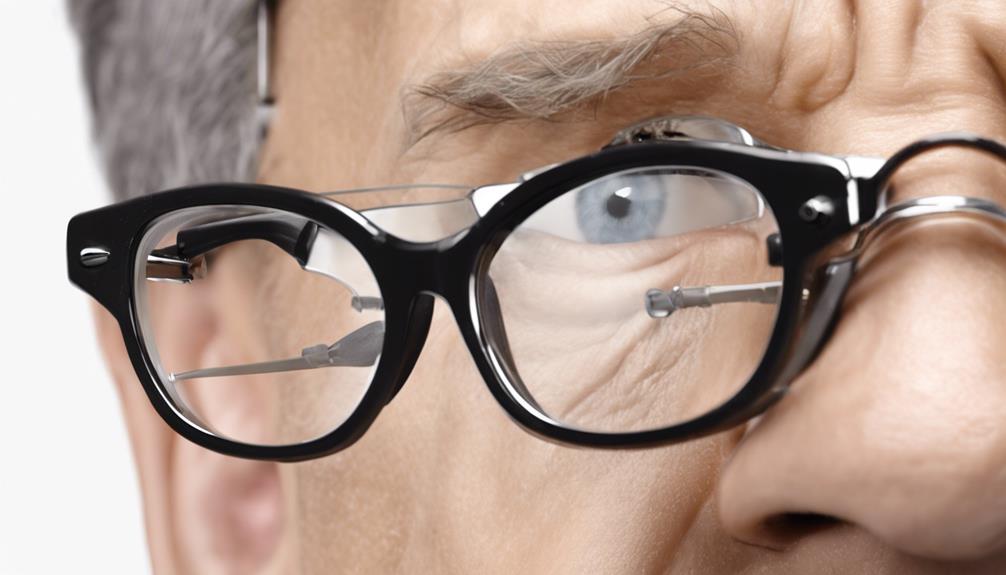
Anti-slip accessories such as ear grips and temple tips play a crucial role in maintaining stability for individuals wearing glasses and hearing aids simultaneously. These accessories are designed to prevent slippage and ensure a comfortable grip, enhancing overall comfort and convenience for users.
Here are some key points to consider when using anti-slip accessories:
- Ear Grips: Ear grips provide a comfortable grip on the ear, helping to secure both the glasses and hearing aids in place. They prevent the glasses from sliding down or moving around due to the presence of hearing aid devices.
- Temple Tips: Temple tips attach to the ends of the glasses' arms, offering additional support and stability. They help prevent the glasses from slipping off the ears, especially when wearing hearing aids.
- Enhanced Stability: Using anti-slip accessories ensures that both the glasses and hearing aids stay in place, allowing the individual to move around without constantly adjusting their eyewear.
- Improved Comfort: By preventing slippage and providing a secure fit, these accessories contribute to a more comfortable wearing experience, making it easier for individuals to go about their daily activities with confidence.
Maintaining Cleanliness and Hygiene Practices
Regularly maintaining cleanliness and hygiene practices for both glasses and hearing aids is essential for optimal performance and longevity of these devices. When it comes to cleaning, using a soft, dry cloth is ideal for gently wiping down glasses frames and hearing aids to prevent dirt buildup and maintain hygiene. For hearing aids, it's crucial to use a gentle cleaning solution recommended by the audiologist to sanitize them without causing damage. Harsh chemicals and water should be avoided near hearing aids to prevent potential malfunctions. Additionally, storing both glasses and hearing aids in dry, protective cases when not in use can help prevent dust accumulation and ensure cleanliness. Always adhere to the manufacturer's instructions for cleaning and maintenance to guarantee the best performance and durability of these devices.
| Cleanliness and Hygiene Tips |
|---|
| Use a dry cloth for cleaning both glasses and hearing aids. |
| Follow audiologist-recommended gentle cleaning solutions. |
| Store devices in protective cases to prevent dirt buildup. |
Frequently Asked Questions
Do Hearing Aids Interfere With Wearing Glasses?
Yes, they can interfere. BTE hearing aids may cause discomfort when worn with glasses due to their positioning. In contrast, ITE and CIC models sit inside the ear, reducing interference with glasses.
Proper adjustments and consultation with audiologists can improve comfort. Consider factors like fit and style to enhance the experience of wearing glasses with hearing aids.
Consultation with professionals can provide personalized solutions for maximizing comfort in this situation.
What Hearing Aids Are Best for People Who Wear Glasses?
When it comes to finding the best hearing aids for people who wear glasses, it's essential to consider comfort and functionality.
Different styles, like Receiver-in-the-Canal or Behind-the-Ear, offer unique benefits for glasses wearers.
Slim design hearing aids with noise reduction technology can enhance the listening experience.
Consulting with an audiologist will help determine the most suitable option that complements both your glasses and hearing needs.
How Can I Make My Hearing Aid More Comfortable?
We can make your hearing aid more comfortable by ensuring a proper fit and regular cleaning.
Lightweight glasses with adjustable nose pads and thin wire earpieces can prevent interference.
Consult with an audiologist for personalized advice.
How Can I Make My Glasses More Comfortable on My Ears?
When it comes to making glasses more comfortable on your ears, there are several strategies to consider. Choosing frames with adjustable nose pads, lightweight materials, and cushioned temple tips can help reduce pressure and ensure a better fit.
Regular maintenance, like cleaning the frames, can also prevent discomfort caused by dirt buildup. By adjusting the temple arms for a secure yet gentle fit, you can maximize comfort without sacrificing style.
Conclusion
In conclusion, maximizing comfort when wearing glasses with hearing aids requires careful consideration of frame styles, proper fit, and maintenance practices. By following these guidelines, wearers can experience a significant improvement in their daily comfort and functionality.
But wait, there's one more crucial tip that can make a world of difference in your experience with these devices. Stay tuned for our next article where we reveal this game-changing insight for ultimate comfort and satisfaction!




